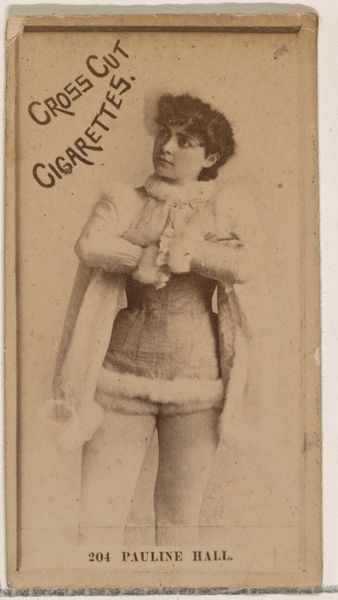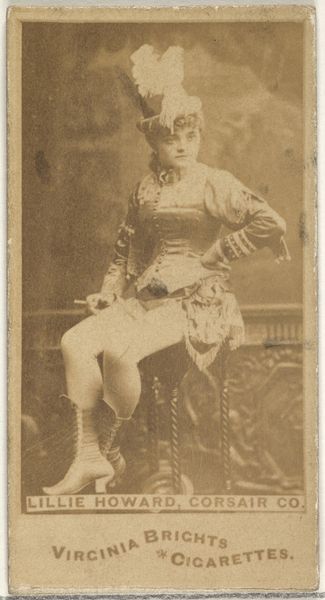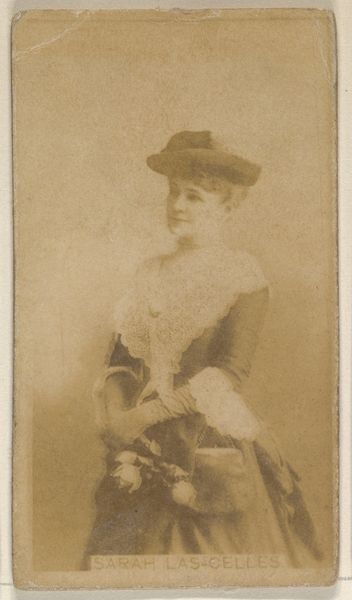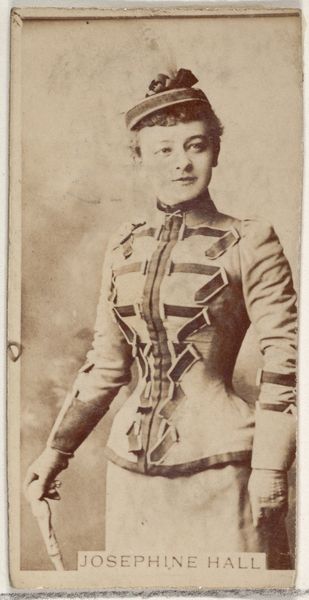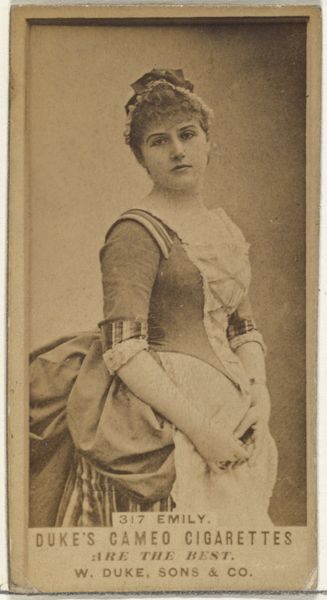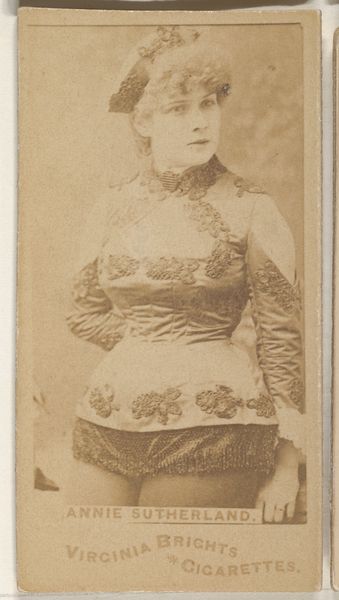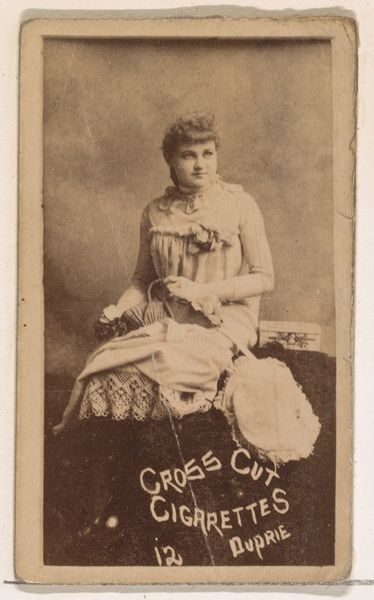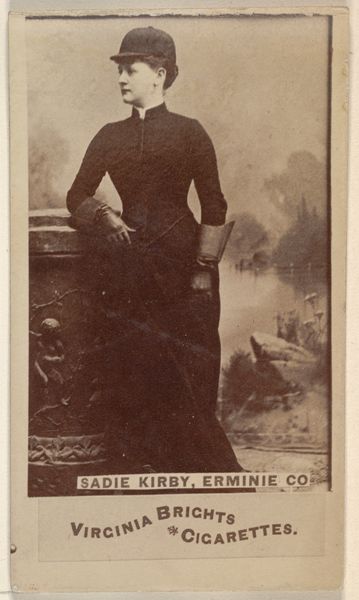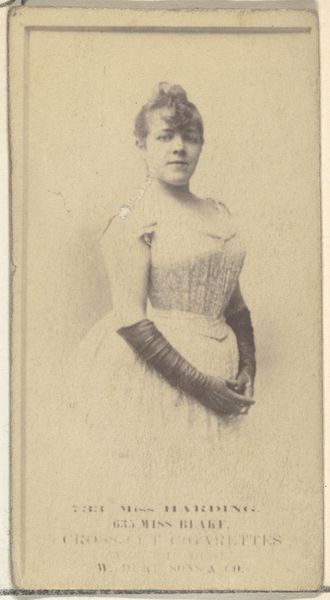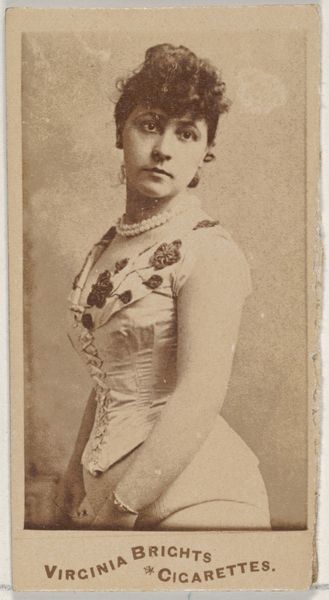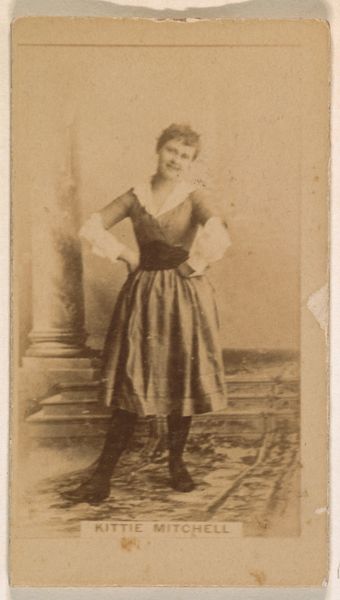
Card Number 193, Mrs. Langtry, from the Actors and Actresses series (N145-2) issued by Duke Sons & Co. to promote Cross Cut Cigarettes 1880s
0:00
0:00
print, photography, albumen-print
#
portrait
# print
#
figuration
#
photography
#
19th century
#
albumen-print
Dimensions: Sheet: 2 5/8 × 1 7/16 in. (6.6 × 3.7 cm)
Copyright: Public Domain
Editor: This is Card Number 193, Mrs. Langtry, from the Actors and Actresses series, created in the 1880s by W. Duke, Sons & Co. as a promotional item for Cross Cut Cigarettes. It’s an albumen print, and its sepia tone gives it a lovely antique feel. The subject, Lillie Langtry, appears very posed and dignified. What kind of statement do you think this trading card is trying to make? Curator: It's fascinating to consider this seemingly simple portrait within the context of its production. Cigarette cards like this weren't just about selling tobacco; they were deeply enmeshed in constructing and circulating ideals of beauty, fame, and even social status in the late 19th century. Look at the positioning of Mrs. Langtry: the slight turn of her body, the controlled gaze, the elaborate gown. How does it compare to our modern obsession with celebrity images? Editor: Well, now, her positioning certainly projects power. Is it suggesting that by purchasing these cigarettes, the consumer gains some kind of access to her world, to sophistication, to the celebrity that Mrs. Langtry represents? Curator: Precisely! And more than that, it subtly reinforces hierarchies. Langtry, as a celebrated actress and socialite, becomes a symbol of aspirational whiteness and upper-class refinement. The commodification of her image is inextricably linked to the promotion of specific social and economic structures of that era. Consider the implications: What does it mean when someone's image, particularly a woman's, is used to sell a product linked to addiction and potentially harmful habits? Editor: It certainly feels different now that I see it as more than just a portrait, but also a carefully constructed marketing tool, that exploits ideals. It is all so manipulative! Curator: Exactly. These kinds of seemingly innocuous images contribute to a larger discourse about representation, power, and consumerism that continues to resonate today. Understanding those roots is crucial for analyzing contemporary visual culture.
Comments
No comments
Be the first to comment and join the conversation on the ultimate creative platform.
